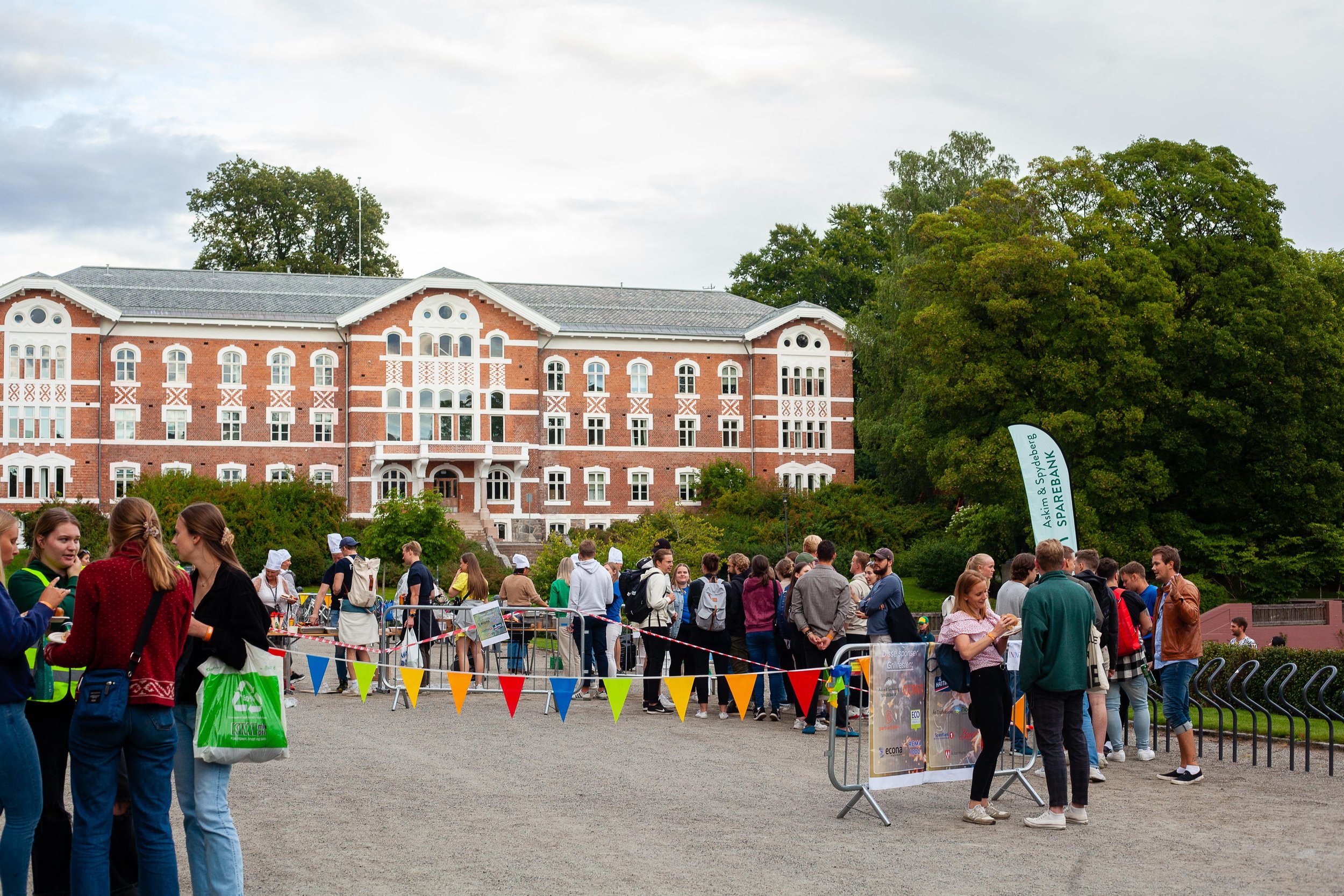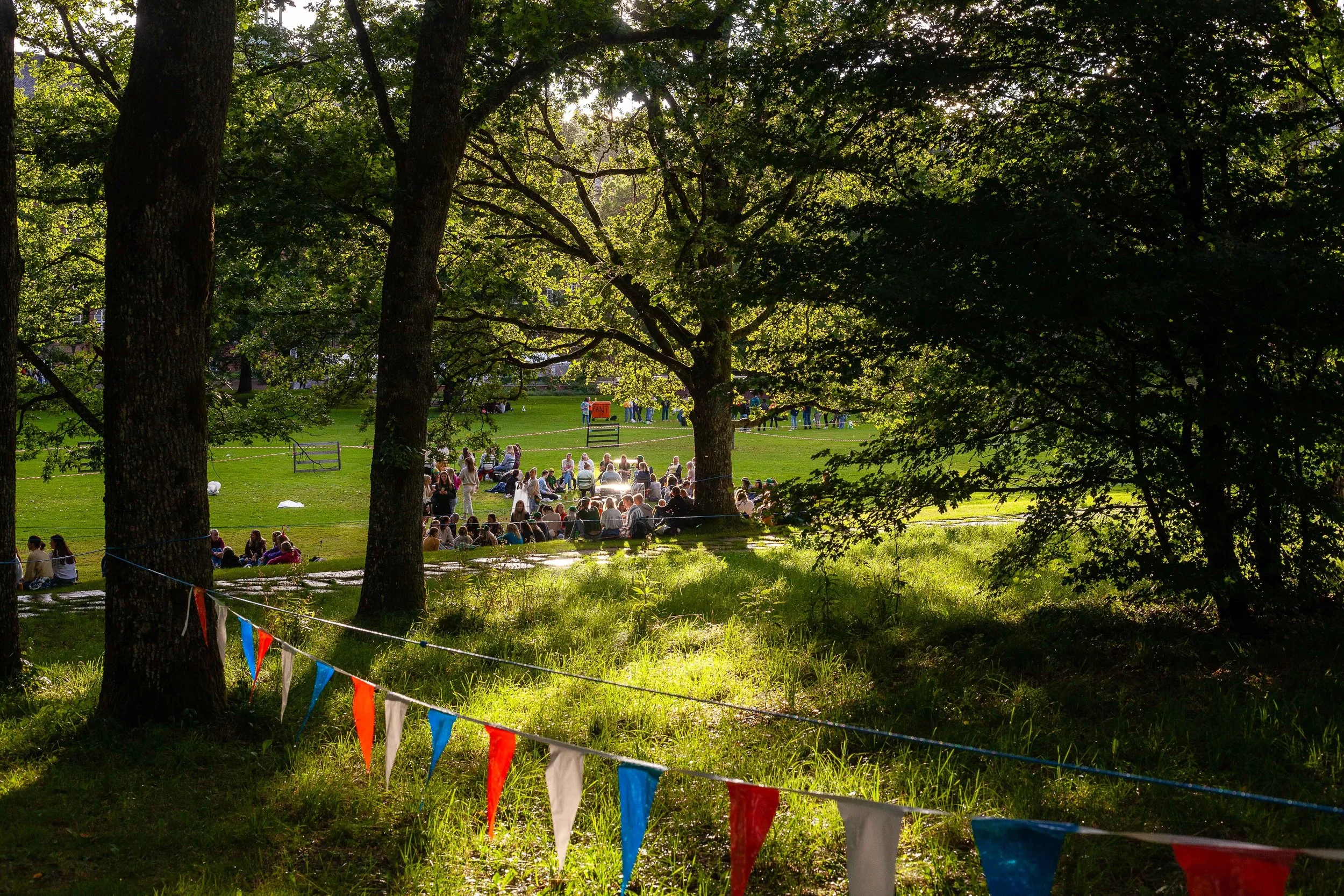Inclusivity saga

Inclusivity saga
For many students, the buddy week is a fun and social start of an unforgettable semester at NMBU. It provides an opportunity to meet fellow students and incorporates freshers into the famous Åsbobla. But how inclusive is the buddy week? Do international students feel welcomed in the spirited bubble of Ås?
Journalist: Iris van Brunschot
Photographer: Nathalie Genevive Bjørneby
Illustrator: Oda Braar Wæge
Photo: Nathalie Genevive Bjørneby
Photo: Nathalie Genevive Bjørneby
A bubble without a buddy
Although international students were encouraged to sign up to the buddy week, many were left without a buddy group upon the 13th of August. Confusion around who could sign up and when to sign up, combined with cohorts of maximum 200 students, meant that those who signed up late were excluded. The International Student Union (ISU) therefore took initiative to organize some last-minute events for students who couldn’t join the main week.
“It is scary to come to a completely new country all alone,” says Rachel Kelly, vice president of the ISU. “The buddy week is vital for socialization, and without it, many internationals struggle to integrate into the university and general student life.” ISU president Beatriz Henna agrees. “Our primary concern is to prevent this from happening again,” she says. “All students should feel welcome at NMBU, regardless of their nationality.”
Overwhelmed with students
Iben Andersen, head of SiT (Student Information Centre) recognizes the importance of international inclusion. “International students represent important opportunities to create international networks, practice language kills and gain insight into other countries’ cultures,” she argues. “They add a lot of value to NMBU and our student community.”
In regard to the buddy week, Andersen explains that they were overwhelmed with the number of students wanting to sign up. “Not only international, but also many Norwegian students weren’t able to join the buddy week due to COVID-19.” She further emphasizes that it has been challenging for everyone to arrange events during the past two years, and that it is now important to take a proactive approach to inclusion.
The paths to inclusion
Putting words into action, SiT organized an open meeting for international students the 13th of October. Some of the suggestions to improve inclusivity were better international marketing of the buddy week, closer cooperation with Samfunnet, as well as the employment of international student mentors. The availability of English information on NMBU’s and Samfunnet’s websites was also a key issue.
While NMBU in 2018 adopted a three-year action plan to preserve and increase equality, diversity and inclusion, there are obviously still some issues that need addressing. ISU therefore plans to file a formal complaint addressing the broader problems of international inclusion.
A new diversity committee
Ina Maria Finnerud, president of the student board, assures they will do their very best to raise the complaint to NMBU’s administration. “We recognize that internationals should have been able to sign up earlier, and apologize for the feelings of exclusion this induced.”
Nisha Jha, one of the board’s members, continues to say that a new ‘diversity committee’ will be established to tackle issues related to inclusion at NMBU. This committee will address how the university can incorporate internationals better in both the autumn and spring semesters.
A comfortable Norwegian bubble
Illustration by Oda Braar Wæge
Amongst internationals, it is well-known that when Norwegians drink a couple of beers, they speak English perfectly. However, the next day they retreat back into their comfortable Norwegian bubble. Could these reserved Norwegian manners be a problem?
Maria Hugues from Mexico experiences that the Norwegian lack of curiosity can be barrier to inclusion. “It can be sad and frustrating that Norwegians only speak English when they are drunk, ” she says. Hugues adds that she feels included at NMBU and ‘loves the university,’ but sometimes feels excluded from ‘the whole samfunnet thing,’ which is expensive and Norwegian oriented. “Oktoberfest is a great example; even the cheapest tickets are very expensive for many international students.”
Hugues understands that it is hard to ‘criticize’ other cultures, and respects the different attitudes. Nevertheless, she believes Norwegians could make more of an effort to interact with internationals and break existing barriers.
So maybe it is time to get to know some internationals sober? Don’t get scared away by their sceptical opinions on ‘brunost’ and ‘makrell i tomat’. In fact, including international perspectives on cultural habits and academic debates can greatly enrich our lives. Some revolutionary ideas might arise from including international opinions on the order of filling a taco!
An open conversation about inclusion
International students continue to fall outside of Åsbobla due to language and information barriers. The confusion around this year’s buddy week did not help matters along. Nevertheless, Nisha Jha mentions that everyone worked and continues to work really hard to prevent both international and Norwegian students from feeling excluded from the student community.
The goal is to integrate everyone into Åsbobla, because once inside this vibrant bubble, one doesn’t ever want to leave. So, be bold; try it out; speak English for longer than 2 minutes next time you meet an international student. Who knows what exiting opportunities it will bring for both!



